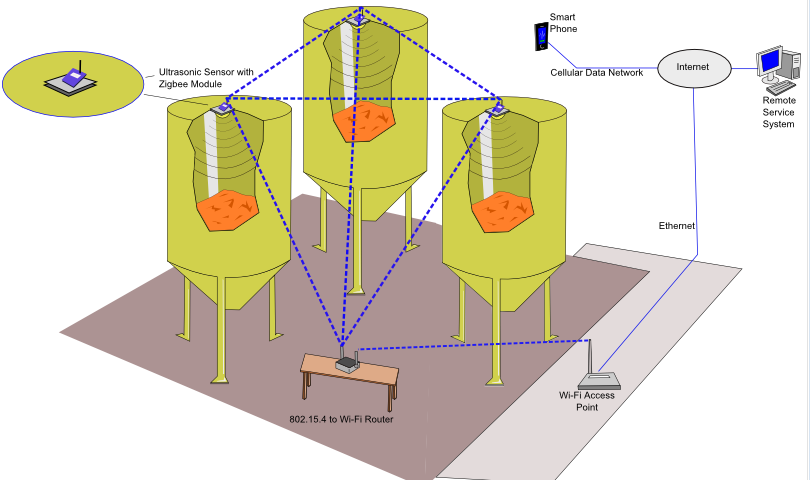By Nicole DiGiose
Known to effectively and wirelessly connect entire cities using existing and inexpensive technology, wireless mesh networking may be on its way to seamlessly conjoining the entire world.
Making a connection
To connect users, a wireless mesh network relies on a small number of wired access points or wireless hotspots. The network connection is spread among a dozen, sometimes hundreds, of wireless mesh nodes that communicate in order to share the network connection across a large area. Wireless mesh networks usually consist of mesh clients, mesh routers and gateways. The mesh clients are often wireless devices, such as laptops and mobile phones, and the mesh routers are used to forward traffic to and from the gateways.

Wireless mesh networking. Image via mouser.com.
The purpose of a wireless mesh network is to ensure that data is properly conveyed to other systems within the network, while using very little power. To do this, just one node needs to be physically wired to a network connection, such as a DSL Internet modem. The one node is able to share the connection wirelessly with the other nodes surrounding it. The more nodes, the further the connection can spread. This is called a cloud of connectivity, and it can serve a small office or a city bustling with millions of people.
How mesh nodes communicate
Mesh nodes are small radio transmitters that function just as wireless routers do. They use the Wi-Fi standards, 802.11a, b, and g in order to communicate wirelessly with users and, of course, each other. When communicating, the nodes automatically choose the quickest path, which is known as dynamic routing. If a node is no longer able to function, the other nodes can still communicate, either directly or through one or more intermediate nodes.
Wireless mesh networks play an important role in future generations of wireless mobile networks. Characterized by self-configuration, easy maintenance, low cost and reliability, they're widely accepted as the alternative to wired networks to connect end user devices.
If you're interested in viewing Mouser's list of featured wireless mesh networking products, such as transceiver and wireless modules, click here. To learn more about wireless mesh networking, visit Mouser's wireless mesh networking applications page.
Advertisement
Learn more about Mouser Electronics





